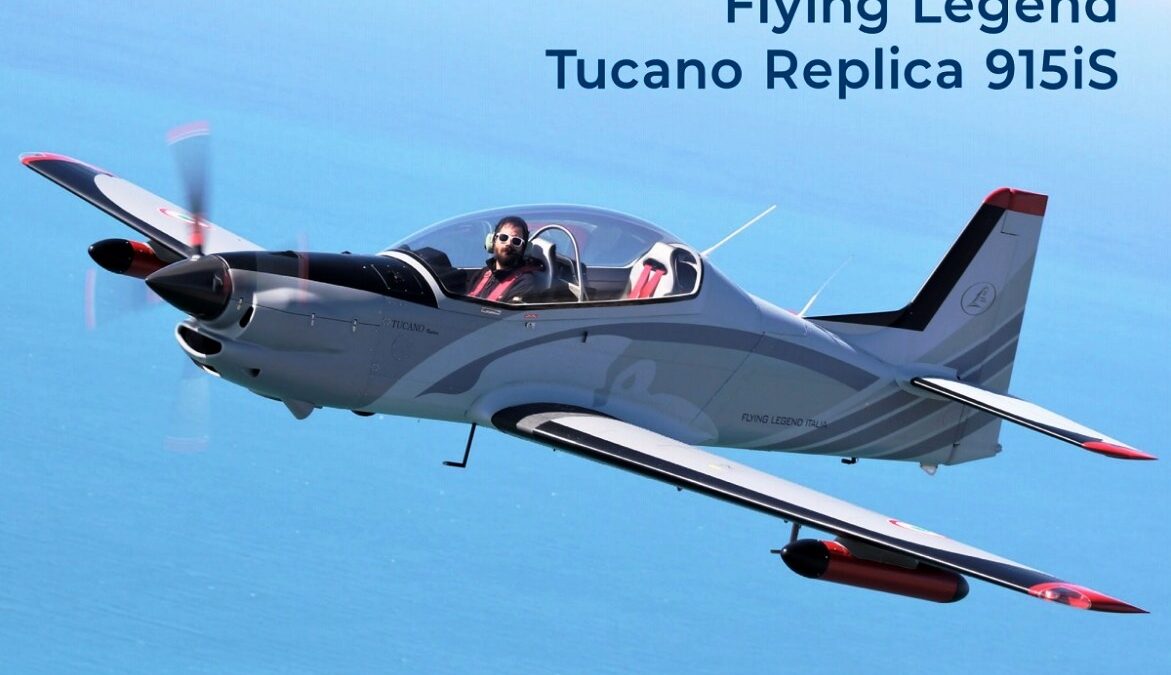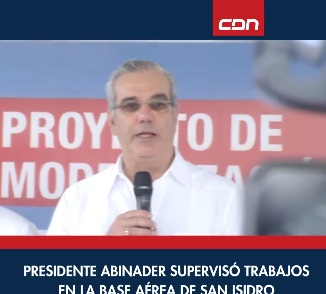In flight with the most powerful version of the robust Sicilian tandem two-seater, produced both inVDS version (today at 600 kg), and in the experimental version 650 kg. The aircraft we test, however, it is very particular …
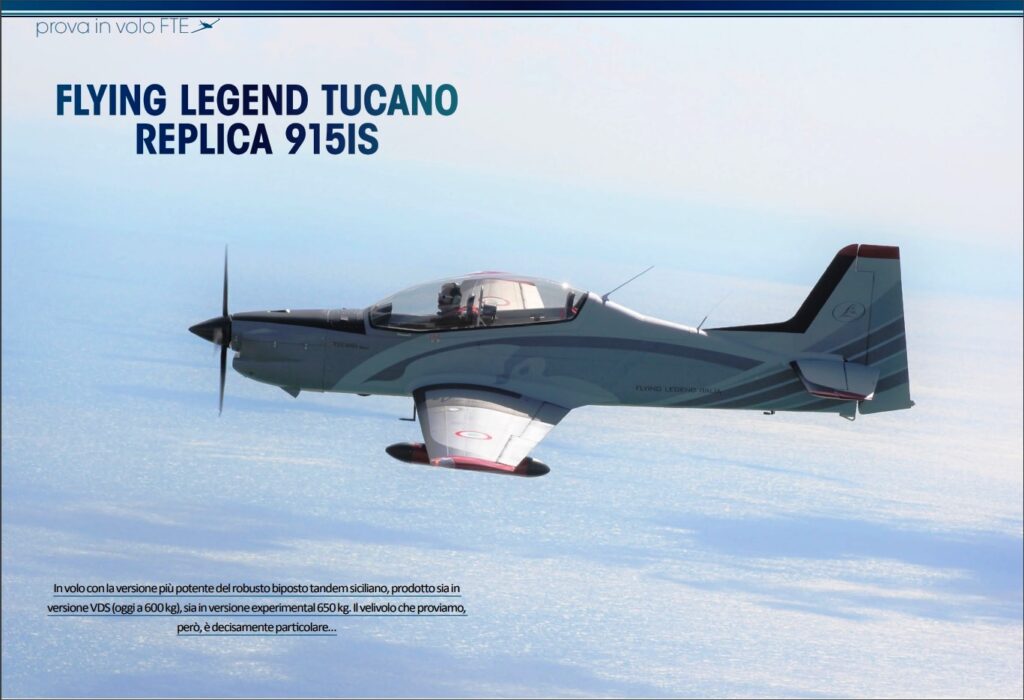
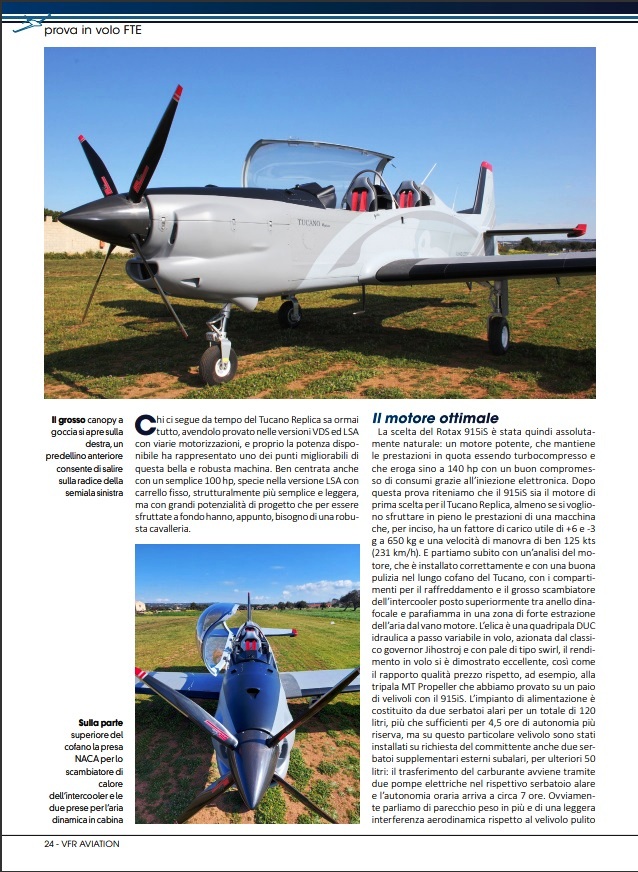
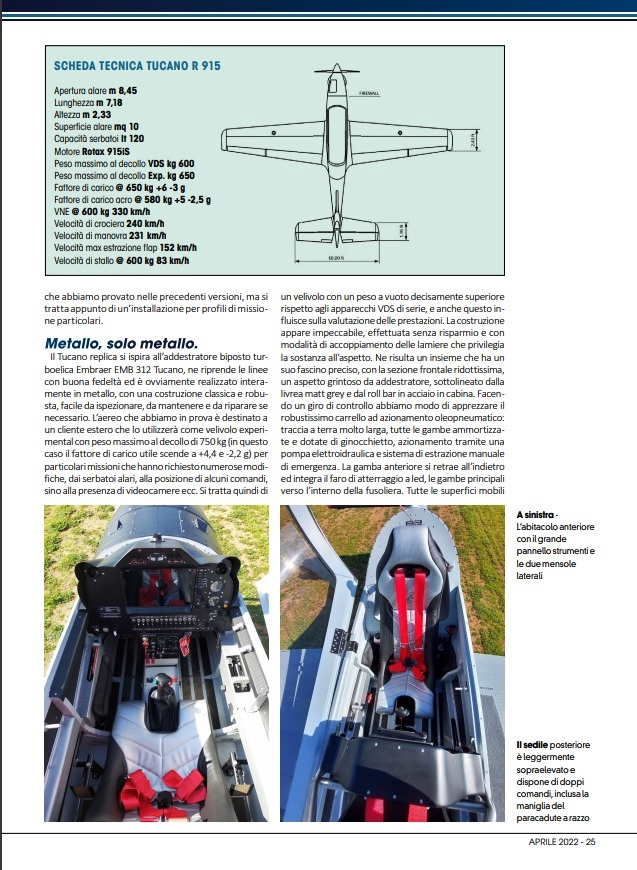
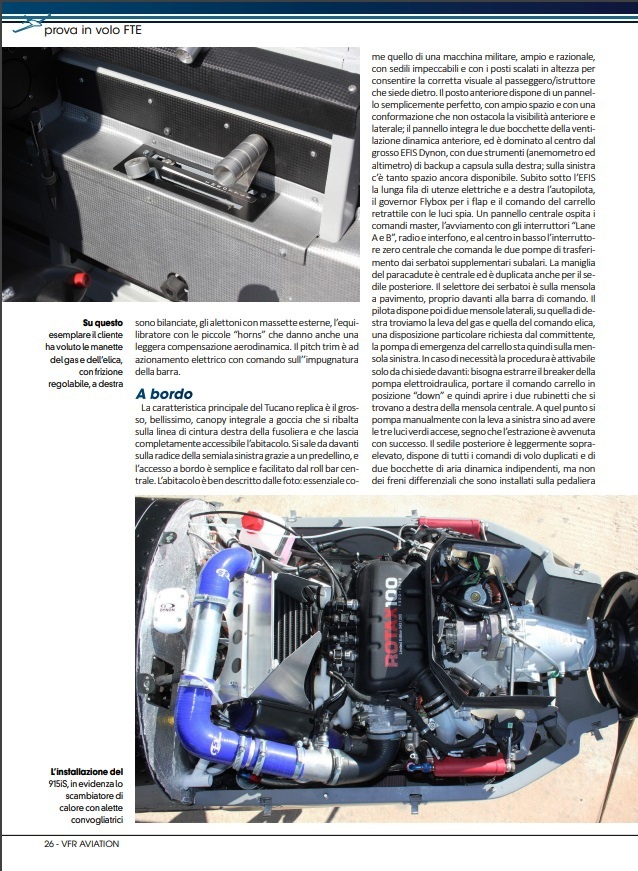
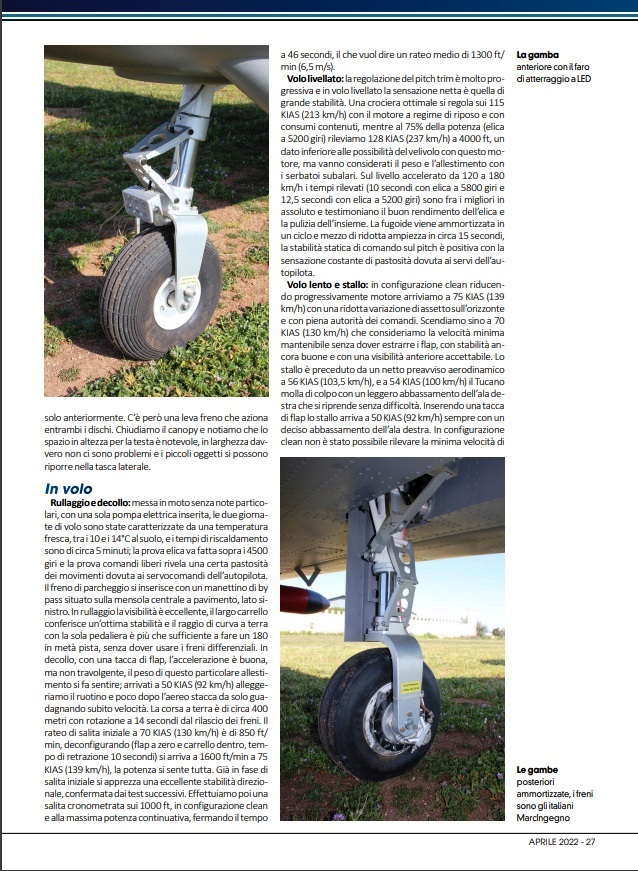
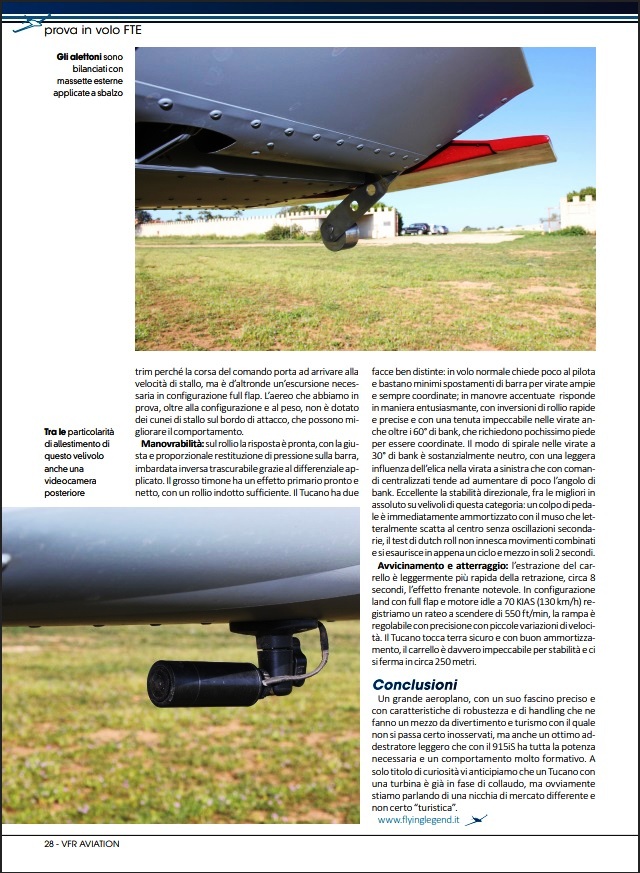
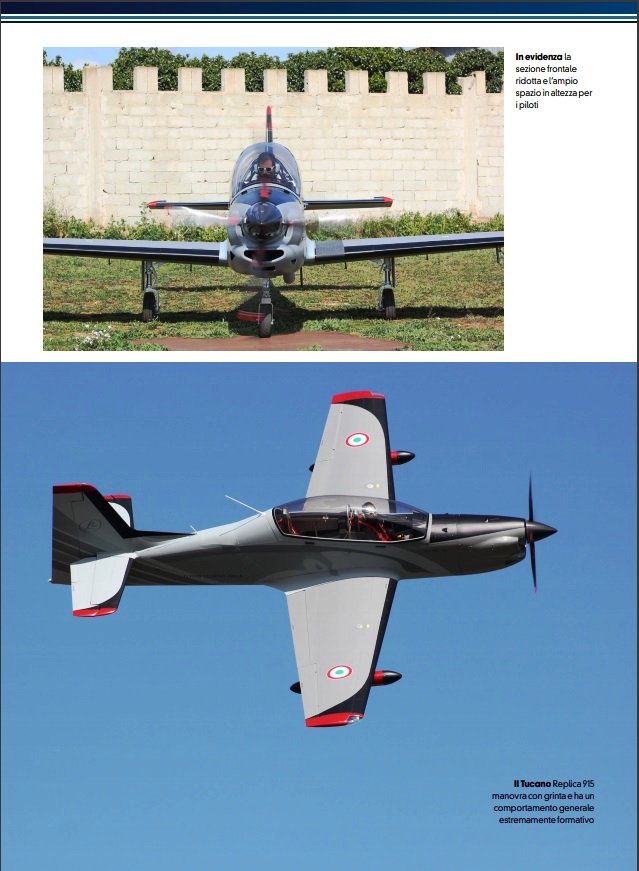
Anyone who has been following us for a long time, knows by now everything about the Tucano Replica, having tried it in the VDS and LSA versions with different motorizations, and the power available represented one of the points that could be improved on this beautiful and sturdy machine.
Well balanced even with a simple 100 hp, especially in the LSA version with fixed gear, structurally simpler and lighter, but with great potential that to be fully exploited needed a robust cavalry
THE OPTIMUM ENGINE
The choice of the Rotax 915iS was, therefore, absolutely natural: a powerful engine that keeps performance at altitude, being turbocharged, e which delivers up to 140 hp with a good compromise in fuel consumption thanks to electronic injection.
After this test we believe that the 915iS is the first choice engine for the Tucano Replica, at least if you want to fully exploit the performance of a machine which, incidentally, has a load factor of +6 and -3 Gs at 650 kg MTOW and a maneuvering speed of 125 kts (231 km/h). Let’s start immediately with an analysis of the engine, which is correctly and neatly installed in the long engine compartment of the Tucano, with the cooling baffles and the large intercooler placed on top between the Rotax ring and the firewall in an area of strong air extraction. The propeller is an hydraulic four-bladed constant speed DUC, driven by the classic Jihostroj governor and with swirl-type blades, the performance in flight proved to be excellent, as well as the quality to price ratio compared, for example, to the three-blade MT Propeller that we tested on a couple of aircraft equipped with the 915iS. The fuel tank system consists of two wing tanks with a total of 120 liters, more than enough for 4.5 hours of flight plus reserve, but on this particular aircraft there were two additional external wing pod tanks, installed as per customer’s request, for a further 50 liters: fuel is transferred via two electric pumps in the respective wing main tank and the flight autonomy reaches about 7 hours. Obviously we are talking about a lot of extra weight and a light aerodynamic interference with respect to a clean configuration
METAL ONLY METAL
The Tucano replica is inspired by the Embraer EMB 312 Tucano two-seater turboprop trainer, and resumes its lines
with good fidelity and is obviously entirely in metal, with a classic and robust construction, easy to inspect, maintain and repair if necessary. The aircraft we are testing will be delivered to a foreign customer who will use it as an experimental aircraft with a maximum take-off weight of 750 kg (in this case the load factor drops to +4.4 and -2.2 Gs) for
particular missions that required numerous changes, such as wing tanks, position of flight controls,
presence of video cameras etc. It is therefore an aircraft with a significantly higher empty weight, compared to a standard VDS configuration, which also affects the performance rating.
The construction appears flawless, done without savings and with a the method of assembling the metal sheets which which favors substance over appearance. The result is a machine that has a its precise charm, with the very small front section, a gritty trainer look, underlined by matt gray livery and steel roll bar in the cabin. During the pre-flight check we have the opportunity to appreciate the Extremely robust oleo-pneumatic landing gear:
very wide ground track, all legs shock-absorbed and equipped with knee scissor links, which can be operated by one electro-hydraulic pump and manual emergency extraction system. The front gear retracts backwards and integrate the led landing light, main gears towards the inside of the fuselage. All control surfaces are balanced, the ailerons with external counterweights, the elevator with small “horns” which also give a slight aerodynamic compensation. The pitch trim is operated electrically via china hats on both control grips.
ON BOARD
The main feature of the Tucano replica is the large, beautiful, single-piece bubble canopy that opens toward the right side of the fuselage and that gives full access to the passenger compartment. You step on from the front of the left wing root thanks to the entry step, access on board is simple and facilitated by the central roll bar. The cockpit is well described in the photos: as essential as the one of a military machine, large and rational, with impeccable seats and with height-scaled seats to allow the correct view to the passenger/instructor sitting behind. The front seat has a simply perfect panel, with ample space and shape that does not hinder forward and lateral visibility; the panel integrates the two air vents of the front dynamic ventilation, and is dominated in the center by the
big Dynon EFIS, with two analog backup instruments (anemometer ed altimeter) on the right; on the left there is a lot of space still available. Immediately under the EFIS the long line of electric utilities and on the right the autopilot,
the governor Flybox for flaps and trolley control retractable with warning lights. A central panel houses the
master commands, starting with the “Lane.” A and B “, radio and intercom, and in the center at the bottom the central zero switch that controls the two transfer pumps from the additional sub-wing tanks. The handle
of the parachute is central and is also duplicated for the rear seat. The tank selector is on the shelf on the floor, just in front of the joystick. The pilot then has two side shelves, on the right one we find the throttle lever and that of the propeller control, a particular provision requested by the client, the gear’s emergency pump is therefore on the left shelf. If necessary, the procedure can be activated only from those who sit in front: you have to extract the breaker of the
electro-hydraulic pump, bring the trolley control to position “down” and then open the two taps that you
located to the right of the central shelf. At that point, yes pump manually with the lever on the left until you have
the three green lights on, a sign that the extraction has taken place with success. The rear seat is slightly elevated, has all the duplicate flight controls and two independent but not dynamic air vents of the differential brakes that are installed on the pedals only anteriorly. However, there is a brake lever that operates both discs. We close the canopy and notice that it is space in height for the head is considerable, in width there are really no problems and small objects are possiblestow in the side pocket.
IN FLIGHT
Taxiing and take-off: set in motion without particular notes, with only one electric pump inserted, the two days of flight were characterized by a temperature fresh, between 10 and 14 ° C on the ground, and the heating times
are about 5 minutes; the propeller test must be done above 4500 turns and the free control test reveals a certain softness of movements due to the autopilot servos. The parking brake is activated with a by leve pass located on the central floor shelf, left side. In taxi, visibility is excellent, the wide trolley gives excellent stability and the radius of the curve on the ground with the pedal board alone is more than enough to make a 180 in the middle of the track, without having to use the differential brakes. In take off, with a flap notch, acceleration is good, but not overwhelming, the weight of this particular staging makes itself felt; arrived at 50 KIAS (92 km / h) we lighten the wheel and shortly after the plane detaches by itself, immediately gaining speed. The run on the ground is about 400 meters with rotation at 14 seconds from the release of the brakes. The Initial climb rate at 70 KIAS (130 km / h) is 850 ft / min, deconfiguring (flap at zero and carriage inside, retraction time 10 seconds) we arrive at 1600 ft / min at 75 KIAS (139 km / h), the power is felt all. Already at the stage of initial climb, excellent directional stability is appreciated, confirmed by subsequent tests. We then carry out one timed climb over 1000 ft, in clean configuration and at maximum continuous power, stopping time
at 46 seconds, which means an average rate of 1300 ft / min (6.5 m / s).
Level flight: the pitch trim adjustment is very progressive and in level flight the clear feeling is that of great stability. An optimal cruise is set at 115 KIAS (213 km / h) with the engine at rest and with low consumption, while at 75% of the power (propeller at 5200 rpm) we detect 128 KIAS (237 km / h) at 4000 ft, a given below the capabilities of the aircraft with this engine, but the weight and equipment with the subalar reservoirs. On the accelerated level from 120 to 180 km / h the times measured (10 seconds with propeller at 5800 rpm and 12.5 seconds with 5200 rpm propeller) are among the best in absolute and testify to the good performance of the propeller e cleanliness of the whole. The phugoid is cushioned in
one and a half cycles of reduced amplitude in about 15 seconds, the static command stability on the pitch is positive with the constant feeling of softness due to the autopilot servos.
Slow flight and stall: in clean configuration by progressively reducing the engine we reach 75 KIAS (139
km / h) with a reduced variation in attitude on the horizon and with full command authority. We go down to 70 KIAS (130 km / h) which we consider the minimum speed maintainable without having to remove the flaps, with still good stability and acceptable forward visibility. The stall is preceded by a clear aerodynamic warning
at 56 KIAS (103.5 km / h), and at 54 KIAS (100 km / h) the Tucano he springs suddenly with a slight lowering of the right wing which resumes without difficulty. By inserting a notch of flap the stall reaches 50 KIAS (92 km / h) always with a
decided lowering of the right wing. In configuration clean could not detect the minimum speed of
trim because the travel of the command leads to reach the stall speed, but on the other hand it is a necessary excursion in full flap configuration. The plane we are in test, in addition to the configuration and weight, is not equipped
leading edge stall wedges, which can improve behavior.
Maneuverability:
on the roll the response is ready, with the right and proportional return of pressure on the bar, negligible reverse yaw thanks to the applied differential. The big rudder has a ready primary effect e clear, with sufficient induced roll. The Toucan has two distinct faces: in normal flight it asks little to the pilot and minimal bar shifts are enough for large turns
and always coordinated; in accentuated maneuvers it responds thrillingly, with rapid roll reversals and precise and with an impeccable hold in turns even beyond 60 ° of bank, which require very little foot to be coordinated. The spiral mode in 30 ° bank turns is essentially neutral, with a slight influence of the propeller in the left turn which, with centralized controls, tends to slightly increase the bank angle Excellent directional stability, among the best in absolute on aircraft of this category: a pedal stroke is immediately amortized with the nose that literally snaps to the center without secondary oscillations, the Dutch roll test does not trigger combined movements and runs out in just one and a half cycles in just 2 seconds.
Approach and landing: the extraction of the gear is slightly faster than the retraction, about 8 seconds, the remarkable braking effect. In configuration land with full flap and idle engine at 70 KIAS (130 km / h) we record a rate of descent of 550 ft / min, the ramp is precisely adjustable with small speed variations. The Tucano touches the ground safely and with good cushioning, the trolley is truly flawless for stability and there it stops in about 250 meters.
CONCLUSION
A large airplane, with its own precise charm and with characteristics of sturdiness and handling that they make a means of entertainment and tourism with which you certainly do not go unnoticed, but also an excellent lightweight trainer that has all the power with the 915iS necessary and very formative behavior. TO just by way of curiosity we anticipate that a toucan with a turbine is already being tested, but obviously we are talking about a different market niche e certainly not “tourist”

